It’s been a month of getting — and occasionally losing — my bearings. According to the Cambridge dictionary, the phrase can mean ‘discovering your exact position’ or ‘becoming familiar with a new situation.’ Both are true in my case.
When I first arrived here, bleary-eyed off the sleeper, I had not yet seen my new home in the flesh, nor even visited this tucked-away spot in the Cairngorms National Park. Jeff, my husband, had come up to Scotland earlier and was already ensconced in his new job. It was he who’d found the cottage we were now renting.
He collected me from Aviemore station, and we drove along progressively smaller roads into the heart of Abernethy forest. Finally, we turned right onto a farm track that rose gently between two fields, at the end of which sat our house. Jeff made me a cup of tea and left for work. I didn’t even know where the bathroom was, let alone where I was. My mental map was blank.
Much of the last few weeks has been spent filling it in — laying down routes, looking for landmarks (the tree with the giant bracket fungus) and reference points (this is the sort of river where you might find dippers) — fulfilling what environmental psychologists Stephen and Rachel Kaplan (proponents of E O Wilson’s biophilia hypothesis) identified as an innate drive to make sense of our environment.
Not that we (or at least, I) always succeed. I thought I’d got the measure of my immediate surroundings, and was feeling quite pleased about it as I strolled along a path through the woods one morning. When I emerged, I was somewhere completely different to where I’d expected.
In Ground Work, edited by Tim Dee, the writer Fiona Sampson observes how when you move to a new area, all the things you don’t know remind you how much you did know about the old place — and how little you’d appreciated the fact of knowing. “I don’t know the order in which the orchard trees will turn yellow,” she writes. “I’ve no idea where the footpaths will become slippery in autumn.”
It’s sad to part ways with a place you know so intimately. But when the familiar is gone, we have to pay attention in a new way.
My hunger for information about this new place has sharpened my senses. As I walk, I notice the hollow sound of my footsteps on the root-latticed earth, the tiny sound of goldcrests in the canopy, the iron smell of frost in the hollows and the low sun flashing between the trees.
I know from experience that this heightened awareness is easily lost, that the brain adjusts the dial with ruthless efficiency to avoid expending unnecessary energy. The new can become old — unnoticed, unremarkable — so swiftly. That’s why I mind my pace, and, if I notice myself thinking ‘I wonder where that goes?’, let my feet answer the call.
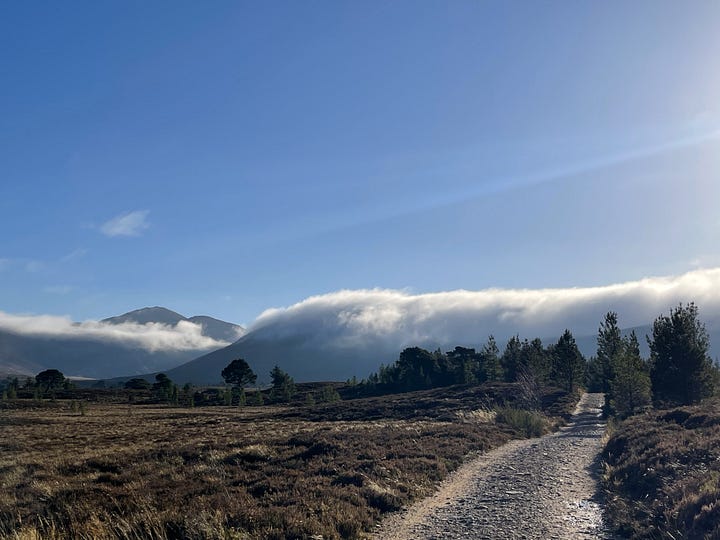
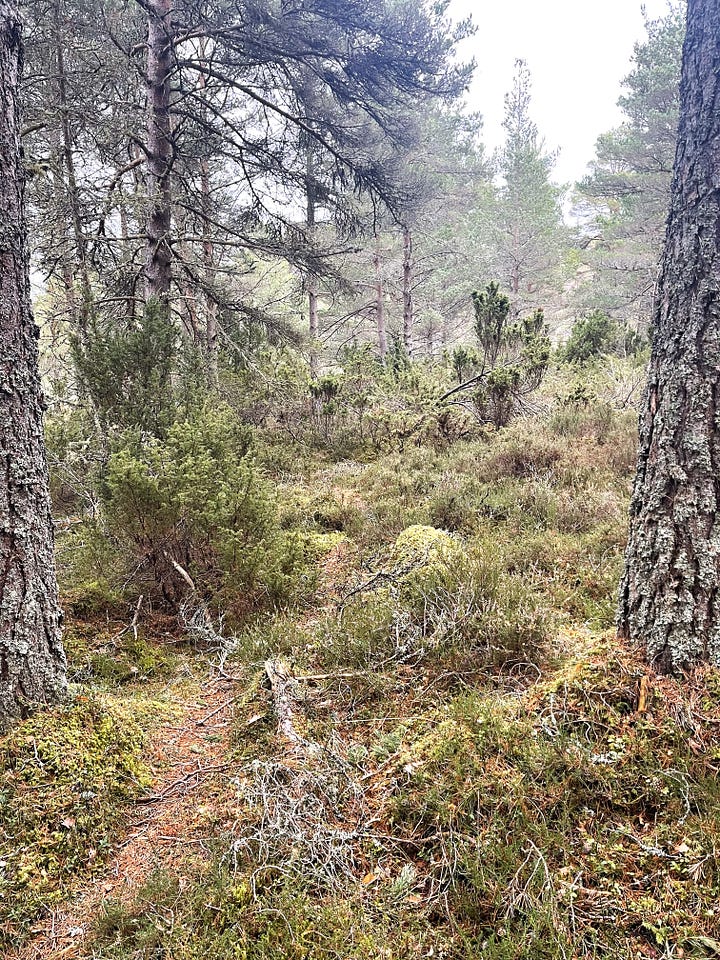
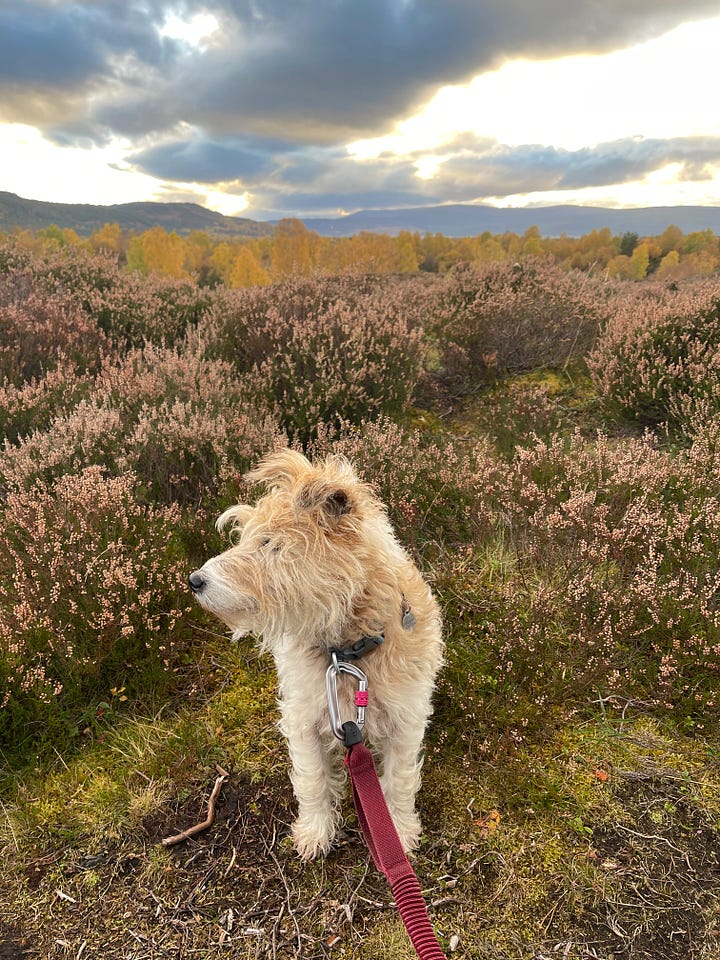
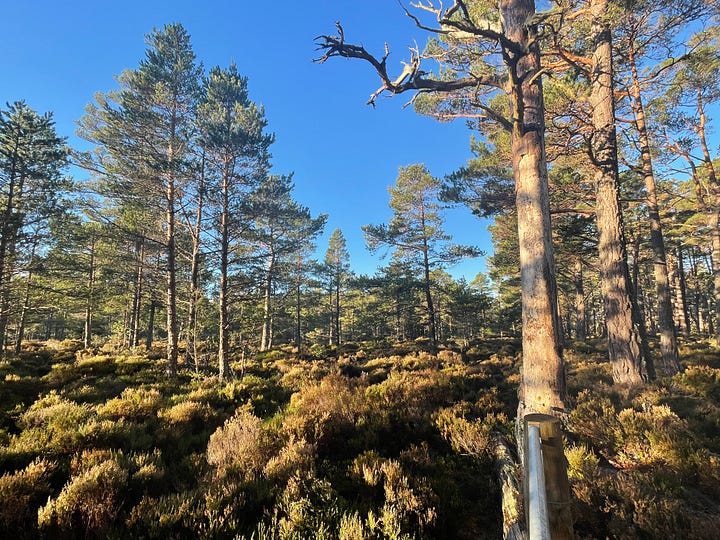
The Kaplans claimed that we are drawn into landscapes by mystery. A path snaking off in to the trees, for example, or a misty horizon, beyond which who knows what lies... I’ve noticed that as I become familiar with routeways that at first felt tricky to find or follow, new ones open up to me. It’s as if the attentional focus initially required to avoid getting lost is freed up to attend to other possibilities, to seek what is not yet known. Or perhaps it’s the forest, beginning to recognise my footfall; allowing me in a little deeper.
One of the first routes I etched onto my mental map starts behind the cottage (there’s something gleefully secretive about being able to leave the house by this backway, my comings and goings not witnessed by anyone); the track veers left to cross boggy birch woodland on a narrow boardwalk, then passes through a clanging metal gate into the pine woods. A mile or so later, you are spilled out onto the road, 500m short of the car park for Loch Garten Nature Reserve.
Both Jeff and I had walked and run this route many times and neither of us had noticed any other paths emanating from it. The OS map didn’t even show this one. But one day, we simultaneously noticed a smaller track veering off between the trees on our left. It appeared quite obvious — how had we missed it before?
We didn’t know where it would lead, but, as the Kaplans observed, the fact of it being there was enough to prompt exploration. The ‘obvious’ bit did not last long. Soon we found ourselves knee-deep in heather and blaeberry, the path missing in action. We persevered, being drawn this way and that by a rumour of a path here, a deceptive clearing there. The ground became boggier, necessitating leaps between mossy hummocks that gave no indication of whether they’d hold our weight or give way, filling our trainers with water. Carrying on was ridiculous. Going back, unthinkable.
At last, at last! Glimpses of the loch between the trees. We moved towards the light, towards the water, and found ourselves once more on a discernible path — just wide enough for two (or four) feet, running parallel to the shore.
The path led us to a small beach, presided over by a tree which I have since, rather audaciously, come to think of ‘my’ tree. (We do this, don’t we? Take possession — metaphorically — of landmarks and views, as a way of rooting ourselves in a new place.)
She is a granny pine, not tall but full-bodied, with gnarled branches sprouting in every direction, like Medusa’s locks. One branch rests on the ground, its tip touching the water.
As we stood there, looking at the tree, and at the tree’s sweeping view of the loch, it felt as if we’d been let into a secret.
I’ve been back half a dozen times since then. Each time, I seem to stumble upon (literally, as well as metaphorically) a different route — none less arduous than the other — making my arrival feel like a minor miracle. There’s always a wren there, tutting furiously at me from the understory.
The last time I went was different, though.
I’d been stuck at my desk, watching the light change through the skylight, when I was seized by a visceral urge to be there, beside the tree, beside the loch.
If I had stopped to think about it, I would have acknowledged that there wasn’t enough daylight left to get there and back. But the desire was strong enough to override my rational brain’s inclination to sound a caution about the late hour. I’ve experienced this compulsion to ‘exist’ in a particular place before and I’m not sure what part of me is in charge of it. Memory? My eyes? My feet? Whatever it is, it’s as if a message suddenly arrives in my mind’s inbox, marked urgent.
I found the beach easily this time. It was the golden hour. A radiant light gilded the reeds, clouds streaked the sky pink and yellow. Geese began to arrive in small groups, honking at each other before settling down to roost, afloat, safe from predators. I sat for a while, my back against the tree, listening to the waves caress the shore.


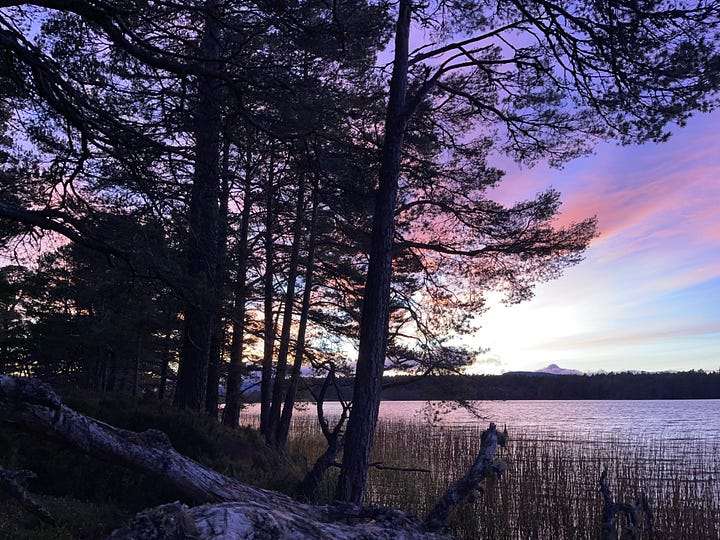
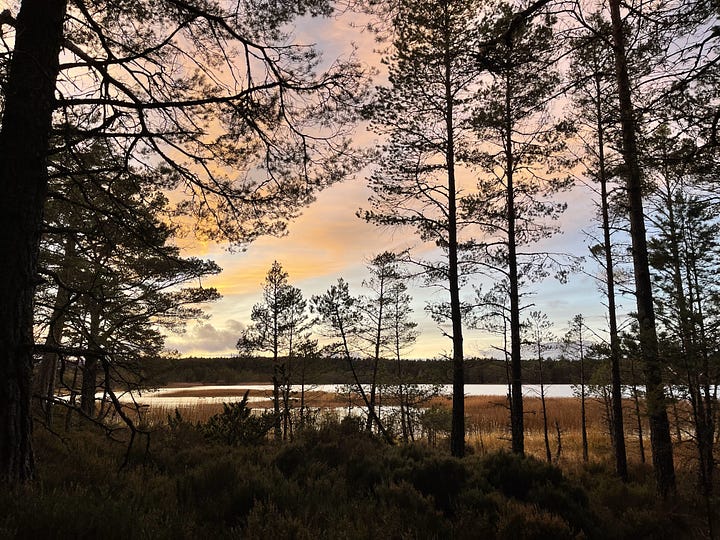
I stayed until all the colour drained away, like water down a plughole, and then I turned back to face the forest. I had put a head torch in my bag, but my eyes had adjusted to the darkness on a minute-by-minute basis and could pick out shades and shapes within the monochrome. I followed the light grey furrow of the path as it wove through the darker undergrowth; trees towered, ink-black against the dark blue sky.
Without a fault, I found my way home.




This was such a lovely early morning read, with gorgeous photos to match. I do almost all of my thinking on walks, so am glad to find your substack.
A great post Sam. The coming to know a place intimately takes time doesn't it, we've lived in this place for ten years come January and I'm still discovering new paths and ways. Place-making is such an important human act and I am a huge fan of walking as a means to come to know our place.